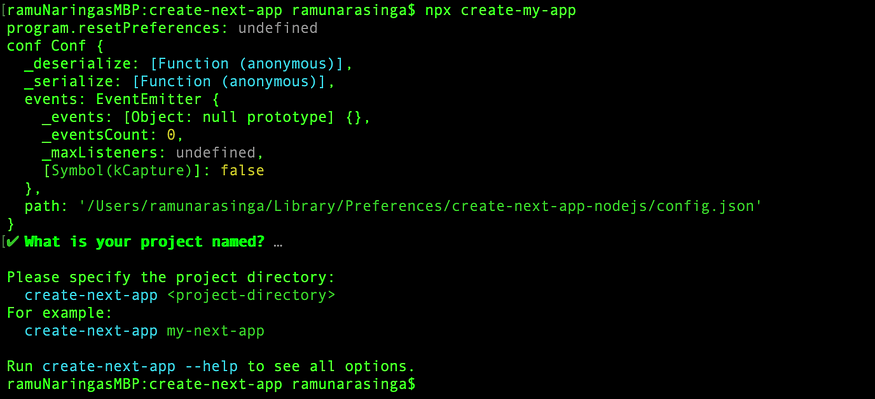Next.js Codebase Analysis <> create-next-app <> index.ts explained — Part 1.8
In the previous article, I wrote about the usage of prompt package to set the project name for your create-next-app.
In this article, I will explain lines 265–274 in index.ts
// if there is no projectPath provided
// ie., no name is set for your next project
// this is how it is handled
if (!projectPath) {
console.log(
'\nPlease specify the project directory:\n' +
` ${cyan(program.name())} ${green('<project-directory>')}\n` +
'For example:\n' +
` ${cyan(program.name())} ${green('my-next-app')}\n\n` +
`Run ${cyan(`${program.name()} --help`)} to see all options.`
)
process.exit(1)
}
But for the above logs to appear, I had to comment the initial set to my-app like below:
const res = await prompts({
// onPromptState is a function available at
// https://github.com/vercel/next.js/blob/canary/packages/create-next-app/index.ts#L25
onState: onPromptState,
type: 'text',
name: 'path',
message: 'What is your project named?',
// initial: 'my-app',
// validates ensures to follow npm package name guidelines
// availabe here: https://www.npmjs.com/package/validate-npm-package-name
validate: (name) => {
const validation = validateNpmName(path.basename(path.resolve(name)))
if (validation.valid) {
return true
}
return 'Invalid project name: ' + validation.problems[0]
},
})
initial: ‘my-app’ is commented

Log with commented initial: ‘my-app’
Now, I will show you what it is like without commented initial: ‘my-app’
if (!projectPath) {
// Read more about prompts here:
// https://www.npmjs.com/package/prompts
const res = await prompts({
// onPromptState is a function available at
// https://github.com/vercel/next.js/blob/canary/packages/create-next-app/index.ts#L25
onState: onPromptState,
type: 'text',
name: 'path',
message: 'What is your project named?',
initial: 'my-app',
// validates ensures to follow npm package name guidelines
// availabe here: https://www.npmjs.com/package/validate-npm-package-name
validate: (name) => {
const validation = validateNpmName(path.basename(path.resolve(name)))
if (validation.valid) {
return true
}
return 'Invalid project name: ' + validation.problems[0]
},
})
Build the project and run npx create-my-app

If you do not enter a name for next project, it defaults to my-app.
Conclusion:
This makes me wonder if it is worth to have that projectPath null safeguard described above when it always defaults to my-app unless initial is not set. May be I should create a pull request for this? idk.
If you have any questions, feel free to reach out to me at ramu.narasinga@gmail.com

Get free courses inspired by the best practices used in open source.
About me:
Hey, my name is Ramu Narasinga. I study large open-source projects and create content about their codebase architecture and best practices, sharing it through articles, videos.
I am open to work on interesting projects. Send me an email at ramu.narasinga@gmail.com
My Github — https://github.com/ramu-narasinga
My website — https://ramunarasinga.com
My Youtube channel — https://www.youtube.com/@ramu-narasinga
Learning platform — https://thinkthroo.com
Codebase Architecture — https://app.thinkthroo.com/architecture
Best practices — https://app.thinkthroo.com/best-practices
Production-grade projects — https://app.thinkthroo.com/production-grade-projects